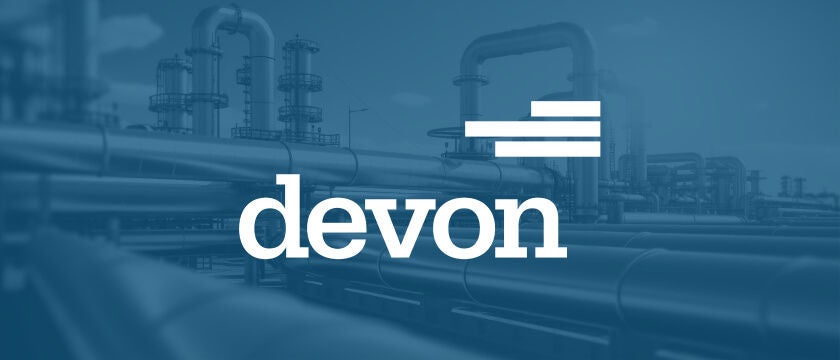

Industry
EnergyLocation
Brighton, U.K.Powering the U.K.—while cutting carbon emissions
EDF is a leading energy supplier, supplying gas and electricity to homes and businesses across the U.K. The company is also Britain’s biggest generator of zero-carbon electricity, providing wind, solar and nuclear power to help cut carbon emissions — and ensure its fixed home energy customers get zero-carbon electricity as standard.
Story Highlights
Easier access to data: EDF’s data science teams have gone from having challenges getting access to data to having a wealth of secure data at their fingertips with Snowflake.
Faster ML development and deployment: EDF now builds and deploys platforms in a matter of months rather than years, and develop new products in weeks using Amazon SageMaker in conjunction with the Snowflake Snowpark for Python feature.
Greater employee and customer satisfaction: EDF has the insights it needs to help customers in need, and the cutting-edge tools to attract and retain ambitious data science professionals.
Providing rapid data access to help customers in need
EDF uses data science in various ways to better serve its customers, from helping to improve energy efficiency to identifying financially vulnerable users and offering appropriate support. However, the company’s Customer Analytics Zone (CAZ) — a self-made platform for developing and deploying machine learning (ML) models — didn’t always make it easy to generate the required insights.
“Previously, we didn’t have good access to data or a way of deploying our models into production,” EDF’s Data Science Lead Rebecca Vickery says. “We have a lot of very sensitive data, so we found it hard to do anything without sign-off and meetings. For every project, we had to ask the data lake team to provide extracts for us to work with, which could take days. It was slow-moving and difficult at times, and came with a lot of complexity, as we then had to manage the security and governance of that data ourselves.”
In 2022, after spending four months trying to deploy a single ML model in CAZ, EDF decided it needed a new customer data platform and an entirely new approach. The energy provider turned to the Snowflake Data Cloud to provide a central source of easily accessible data for its new Intelligent Customer Engine (ICE).
EDF now uses Snowflake and its Snowpark development framework to allow data scientists to use Python, their language of their choice, and bring ML models into production on Amazon SageMaker. EDF is taking advantage of the AWS and Snowflake partner relationship to provision enterprise-grade machine learning operations (MLOps) and data science capabilities.

“With the Snowpark feature, the benefits of being able to run data science tasks, such as feature engineering, directly where the data sits are massive. It’s made our work a lot more efficient and enjoyable.”
Rebecca Vickery
A one-stop shop for customer analytics
EDF considered several data platforms to support its new customer intelligence solution, but Snowflake offered benefits unmatched by competitors, including elastic scalability and a language-agnostic processing engine with Snowpark.
“These were both key features for us,” says Alex Read, EDF’s Senior Manager of Data Platforms. “With our previous Spark-based platforms, there came a point where it would be difficult to scale, and we were missing our load SLAs. With Snowflake, the split between compute and storage makes it much easier. We haven’t missed an SLA since migrating.”
EDF now uses Snowflake as a central repository for all of its customer data. And through Snowpark’s support for Python and SQL, business users can manipulate that data exactly where it lies, deploying end-to-end machine learning to uncover the insights that make customers’ lives easier. It’s a world away from the complex and cumbersome environment that existed before.
Creating meaningful models with data on tap
With its previous architecture, it would take months for EDF’s data science team to deploy a machine learning model that could power customer insights or new customer-facing products. But with Snowflake, that time has been reduced to a matter of days.
The speed our team can work at has increased significantly. Before, we could support maybe six new data products over the course of a year. I think we could triple or quadruple that now.”
Rebecca Vickery
One notable example among these new products is an ML algorithm designed to identify customers who are financially vulnerable. The model flags those who have regular periods of disconnection, or those who top up meters irregularly with small amounts of money, giving EDF the opportunity to provide assistance in a time of need.
“We’ve gone from having challenges getting access to data to now having a wealth of data at our disposal,” Vickery says. “We’re now able to build products like this in three or four weeks, whereas before it would have taken months at least.”
Similarly, platform development has also been given a boost, as illustrated by the rapid development and deployment of ICE to replace the Customer Analytics Zone. “Our Customer Analytics Zone was about three years in the making, and ultimately we still didn’t have a fully built platform,” Read says. “With Snowflake, we’ve been able to build a fully fledged, automated data science and analytics environment in a matter of months.”
Creating a platform to attract and retain top talent
One major advantage of the migration to Snowflake is that EDF has been able to consolidate multiple environments with different vendors, simplifying its IT landscape and, ultimately, reducing costs.
“Our work was very resource-intensive before,” Read says. “But now we can work with a more consolidated team that has a single skill set. This, along with the fact we’re only paying for the resources we use, has significant cost benefits.”
EDF feels the platform will also help strengthen that team, attracting the kind of talent that is eager to explore the latest technologies and cloud-based data platforms.
“It helps with both attraction and retention,” Vickery says. “Having a modern platform and providing the opportunity to upskill on Snowflake is a huge pull for people looking to progress their careers. And, for our existing data scientists, not wrestling with data management and governance to get to the interesting part of our job — building models and generating insights — makes EDF a much better place to work.”
Data-driven customer experiences in a time of need
With this streamlined platform, EDF’s data scientists are able to focus on their primary initiative — taking care of customers, helping them through difficult times, and providing the bespoke products and services that lead to higher customer satisfaction and retention.
EDF recently released its energy hub analytics to customers, too, enabling them to use their own smart meter data to track their energy usage quickly and accurately. Customers can now access vital insights into how they can reduce consumption, which can greatly reduce both carbon footprints and energy bills.
“Snowflake will have a significant impact on our customers,” Vickery says. “We’re much better positioned to serve them now, whether that’s proactively helping them with payment issues or offering them the right products and prices for their current situations.”
“The benefits are immeasurable compared to where we were six months ago,” Read says. “And we’re continuing to explore possibilities, using Snowflake to support marketing activities and general operations, as well as ensure regulatory compliance going forward. Now that we’ve seen what it can do, this will be a big year for EDF and Snowflake.”



